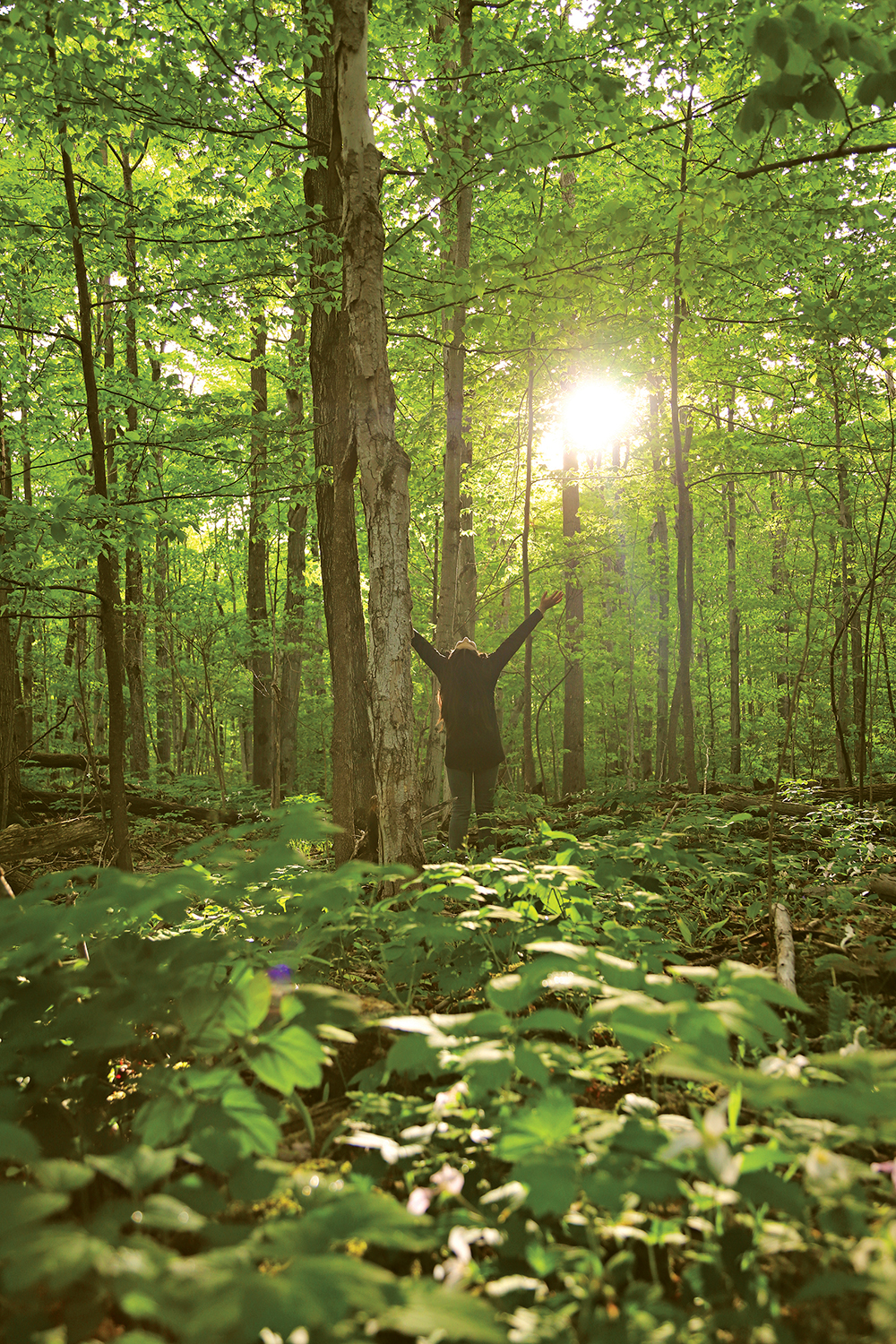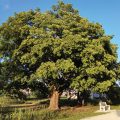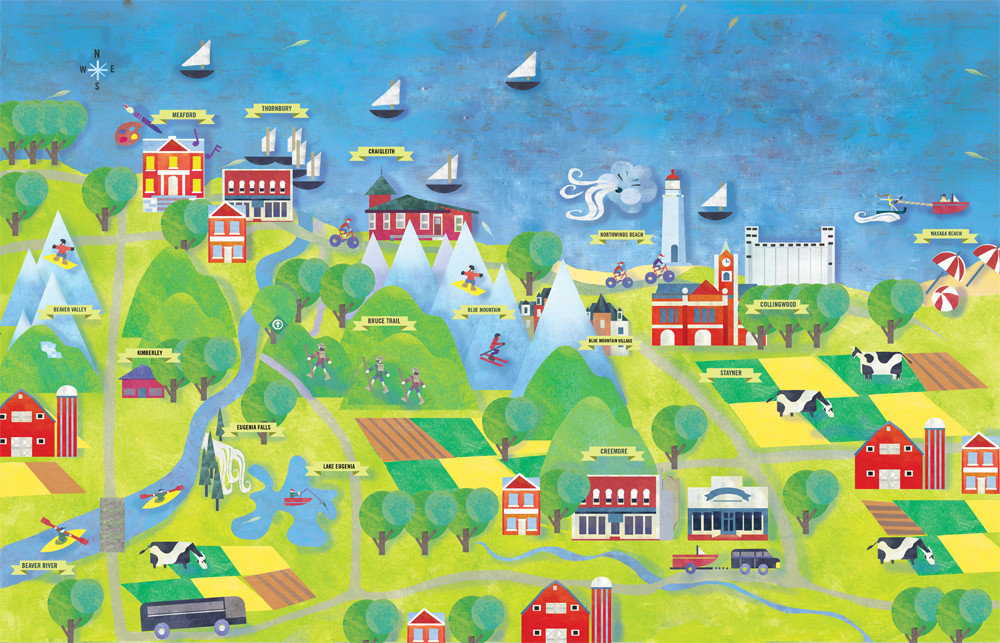If the activity of “forest bathing” has you packing extra sunscreen and your birthday suit, stand corrected. Read on and we’ll save you the police fines.
by Leah Sobon // Photography by Jessica Crandlemire
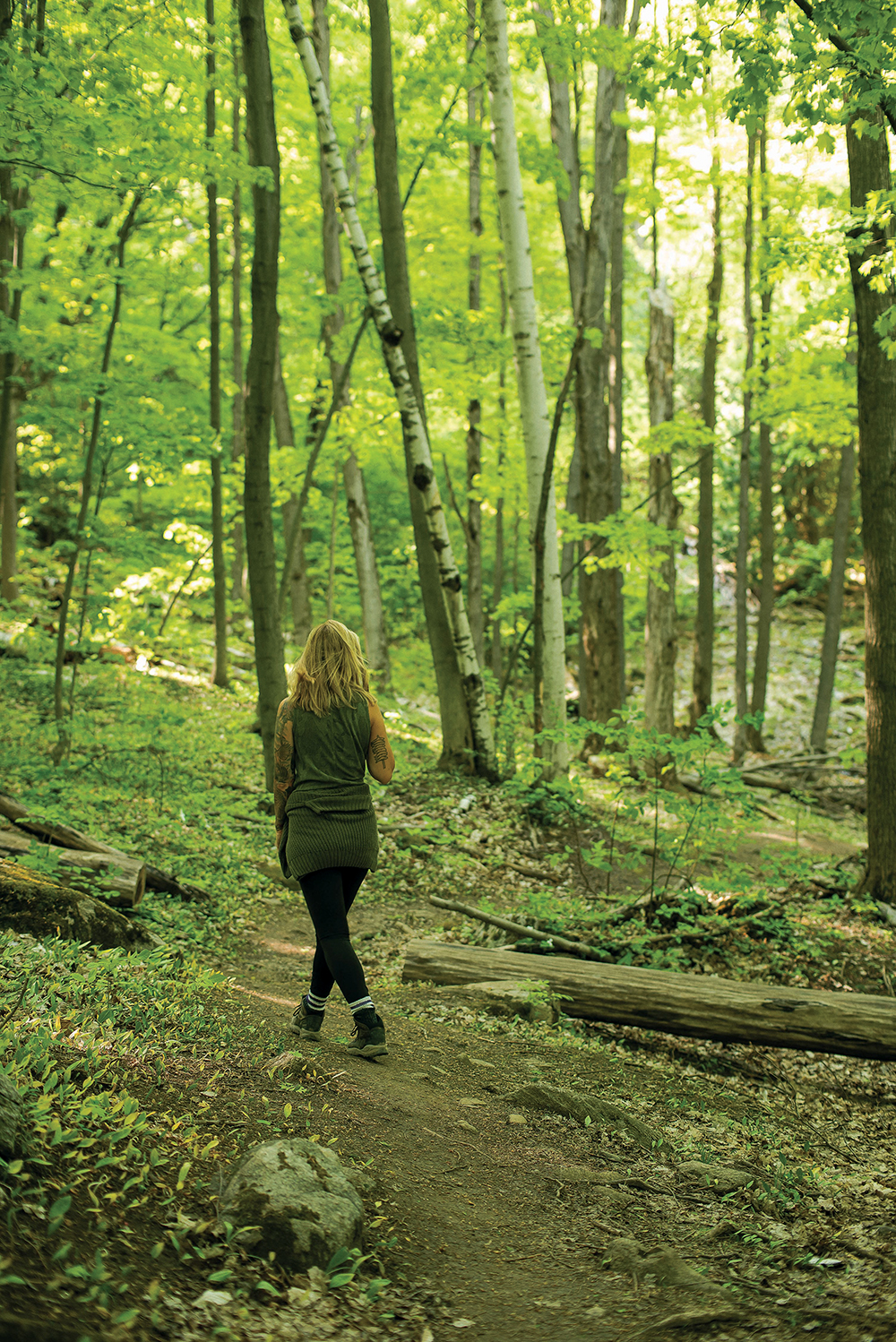
“Take a short walk through the forest
and imagine you’re in a really slow-moving train or bus. You’re sitting beside the window and that’s the only place you can look out. You can’t look around like you normally do. You’re seeing trees and detail come into your view and then leave.”
These words are part of a series of “invitations” that make up my introduction to the practice of “forest bathing.” I’ve joined forest therapy guide Neil Baldwin at his treed acreage a 20-minute drive southwest of Owen Sound. The idea, Baldwin has explained, is to focus on one sense at time—in this case sight—and pick out details I might not otherwise see. Later, he talks me through different levels of visual focus—from macro to micro—and then to the auditory field.
“Focus really hard to not just hear, but to listen. It could be the sounds of the pine needles under your feet. It could be the sound of birds. It could be something scurrying in the forest, a twig breaking in the distance.”
As a human race, now more than ever, we seem to be collectively searching for ways to de-stress and reconnect. With the crisis of mental health steadily on the rise, practices such as forest bathing are becoming more popular, thanks to its affordability (it’s free) and its accessibility (it’s everywhere)—not to mention the hunger for nature-connection awakened by the pandemic. Increasingly, trained guides like Baldwin are formalizing the practice and offering it as a structured group activity.
With a background in psychology, Baldwin spent 25 years as a life and career counsellor at Sheridan College in Oakville. On his website he describes himself as a “straddler” between contrasting worlds—the right brain and the left, the urban and the natural. In retirement he traded a suburban house on a 40-foot lot in the GTA for an off-grid cabin in a 50-acre forest up here. Now he operates Soul Trail, drawing on his counselling expertise to offer outdoor guided services such as forest bathing (which he terms forest therapy) and labyrinth walks.
The term “forest bathing” is the literal translation of the Japanese term, shinrin-yoku (shinrin means “forest” and yoku meaning “bathing”), for the practice of embracing all facets of the forest around you.
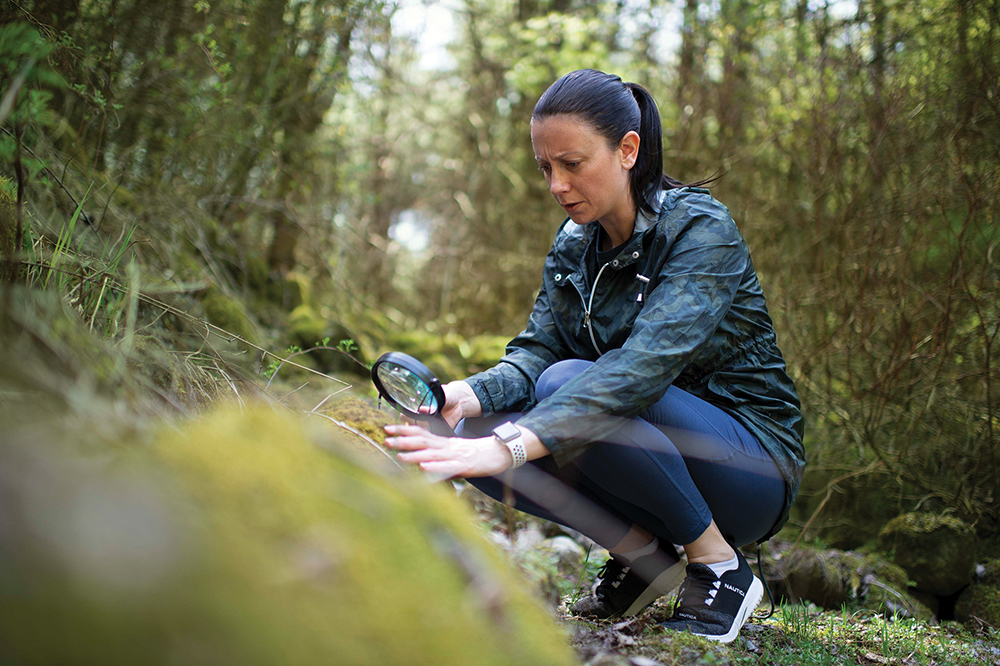
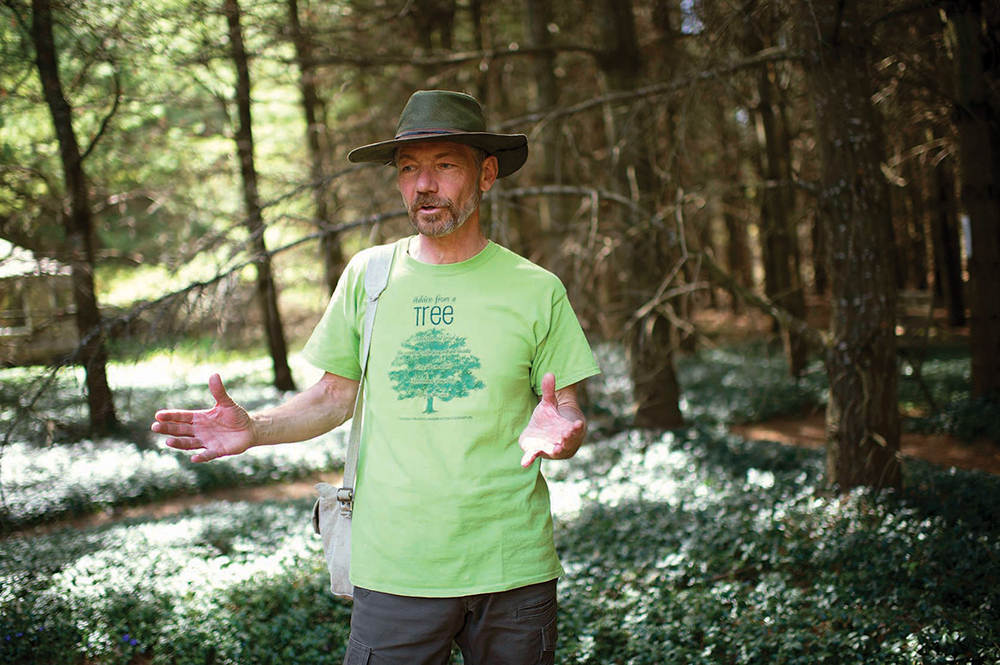
“Forest bathing, nature therapy, by whatever name, is about experiencing generally familiar environments in potentially unfamiliar ways,” says Baldwin, summing up what he was trying to accomplish on our introductory excursion. But it’s also about soaking up real medical benefits that science is just starting to understand.
The term “forest bathing” is the literal translation of the Japanese term, shinrin-yoku (shinrin means “forest” and yoku meaning “bathing”), for the practice of embracing all facets of the forest around you. Stimulating more than just your sight and hearing, this mind-body experience teaches the importance of utilizing all of the characteristics of the forest alongside the human senses—touch included.
Join a guide like Baldwin and you’ll quickly learn that embracing the flora and fauna is acceptable forest bathing behaviour, alongside walking in silence, sitting or leaning against a tree or on the ground, or standing in the centre of a forest clearing, arms relaxed, taking in everything the forest has to offer.
What you definitely won’t be doing is moving fast. A forest bath is not a hike. Baldwin says that a typical three-hour forest therapy walk may not even cover a kilometre. Removing all of the time constraints and distance goals—something much more easily accomplished with the help of a guide—opens the way for a newfound appreciation for stopping and smelling not only the roses but the leaves, trees and earthy mosses.
Wonderful smells—which science is now teaching us have powerful healing properties.
While nature has long been touted as one of the best cures for anxiety and stress, forest bathing takes this one step further by exploring all of the physiological benefits that come with it, such as reducing levels of the stress hormone cortisol.
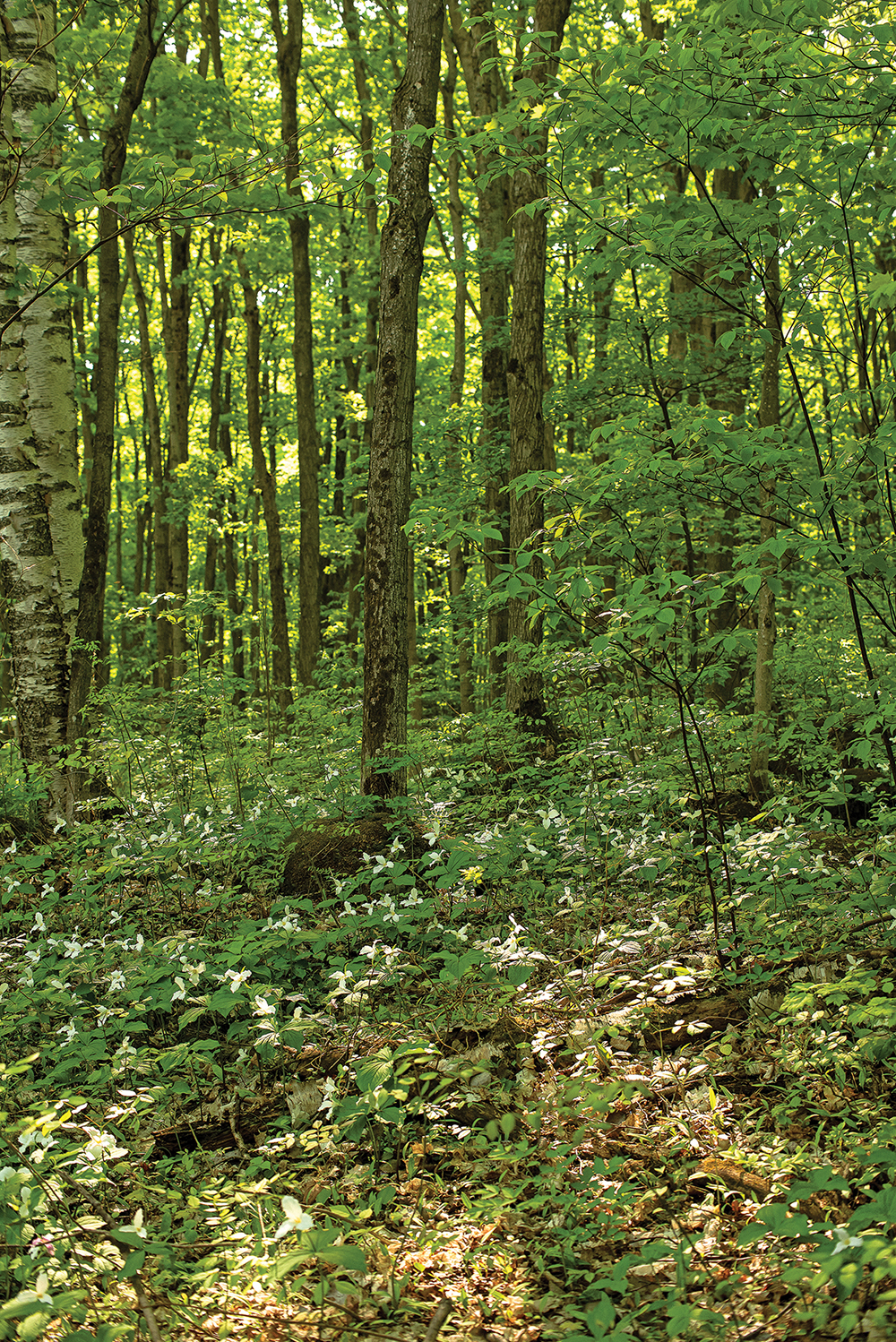
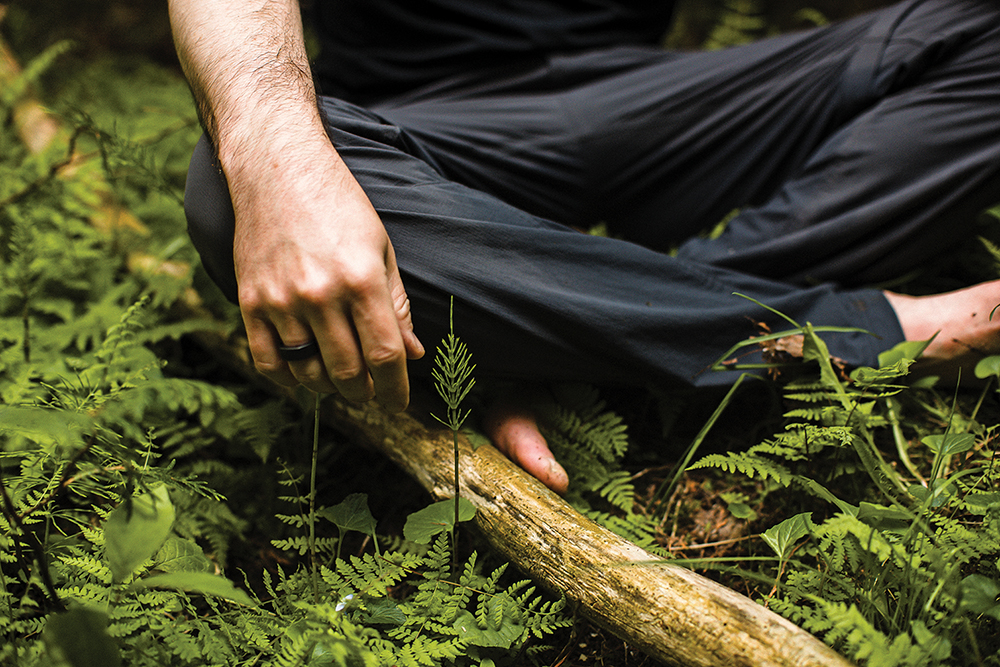
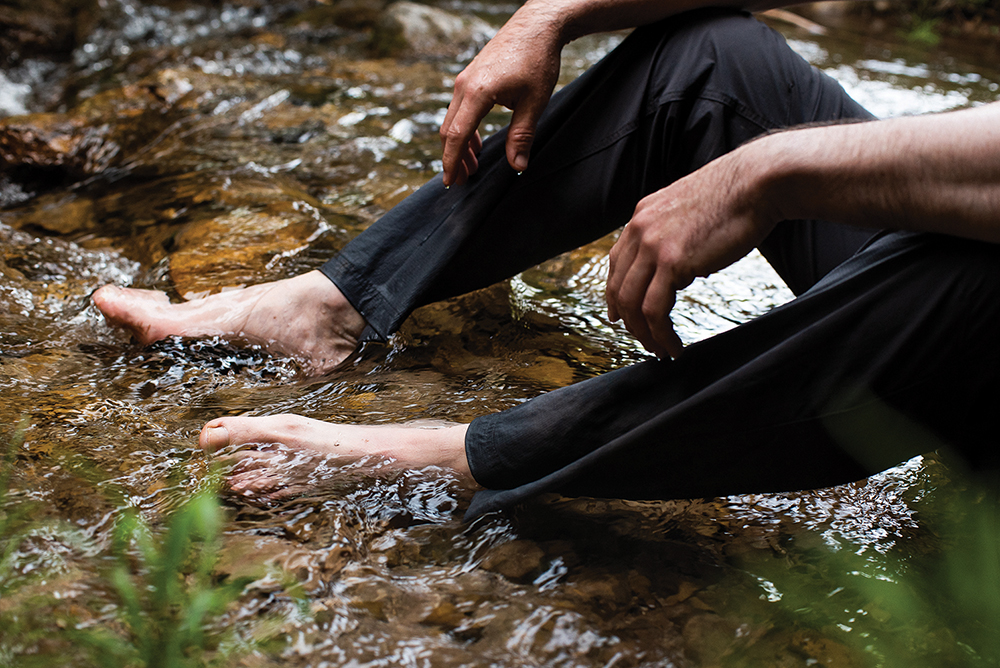

Cortisol plays a vital role in many normal body functions. However, with chronic and acute levels of stress, more often than not we end up producing too much of it, resulting in negative effects which can include fatigue, muscle weakness and even a decreased immune response.
Research has found that forest bathing counteracts some of these chronic stress responses by allowing the body to slow down, breathe and appreciate the calm and simplicity that comes with experiencing nature at a quarter of the speed.
When stress and anxiety are reduced, our body’s natural tendency to respond with a fight-or-flight response lessens, which in turn can lower blood pressure as well as heart rate. With continued practice, forest bathing could have a wide range of long-term physical and psychological benefits.
The most-cited medical name behind forest bathing research is Qing Li, a medical doctor and founder of the Japanese Society of Forest Medicine. Li’s research discovered that forest bathing had benefits beyond reducing blood pressure and stress. He extends them to include mood improvements, increased ability to focus, accelerated post-surgical healing, improved sleep and a boosted immune system response with a noted increase in the body’s NK (natural killer) cells responsible for killing tumor cells.
Li attributes forest bathing’s health effects to “phytoncides” or “wood essential oils”—the antimicrobial volatile organic compounds given off by trees to protect themselves against pests.
According to forest bathing practitioners like Beth Foster, a retired high school drama teacher who is now a busy forest bathing guide in Barrie, phytoncides are a big reason that green spaces make us feel so good.
“Spending time in the woods inhaling phytoncides, especially if you’re following a guide who is encouraging a deeper connection, makes us feel better. It brings a sense of joy. You can never have too much of that.”
“The easiest way to experience nature more deeply is to shut off your phone, find a spot, sit on the ground or lean on a tree, then be still, be silent and be patient.”
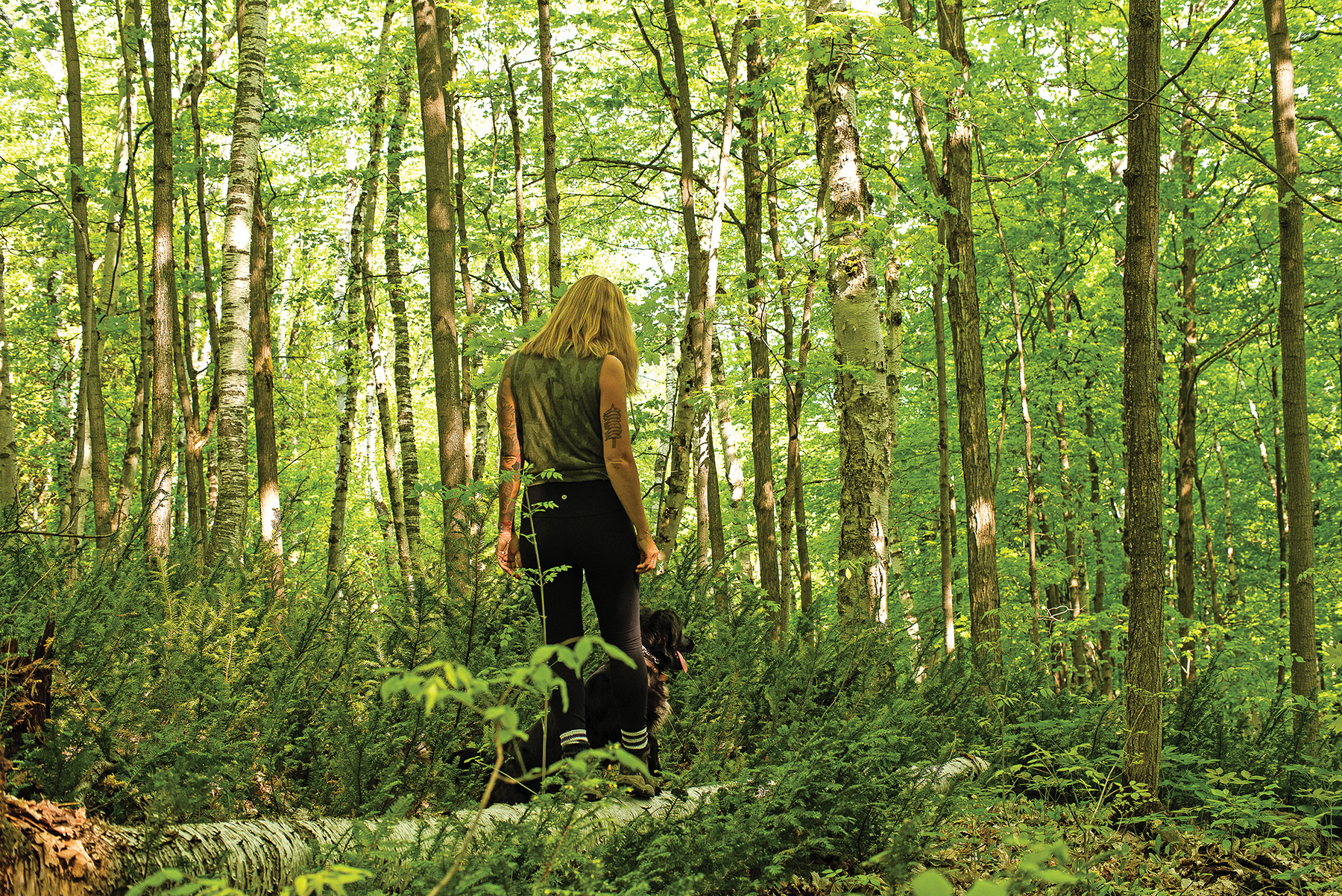
As the science behind forest bathing mounts, so does the professionalization of the field. There are now two organizations that train and certify forest therapy guides globally: the Global Institute of Forest Therapy (GIFT) and the Association of Nature and Forest Therapy (ANFT).
Both organizations have branched out into officially designating or certifying forest bathing trails.
While any quiet forest can likely meet the needs of a forest bather, designated forest bathing trails direct people to sites with a large concentration of the proven most beneficial elements, such as access to water, a diversity of plants and landscapes, and the presence of phytoncide-emitting conifers.
In 2018 the City of Markham opened four shinrin-yoku trails, one of which is the first GIFT-designated trail in Canada. An article about the trails published by the Ontario Association of Landscape Architects explains: “The most important feature necessary to certify a site as a healing forest is the qualitative way in which it engages all five senses. Considerations include temperature, humidity, luminosity, radiant heat, air current, sounds, volatile organic compounds given off by trees, and physiological factors such as heat and cold, light and dark.”
Foster, who is ANFT-certified, designed a free, self-guided forest bathing trail at the Scandinave Spa in Collingwood. Guests are encouraged to pick up a trail guidebook, which contains Foster’s “invitations,” at the Scandinave welcome hut or reception area.
“It’s a lovely thing to do before or after a dip because there’s a relationship between forest bathing and hydrotherapy. The best forest bathing is when you have access to water of some sort. It just gives you more parts of nature to engage with,” says Foster.
As the science catches up to what we’ve known intuitively all along, someday soon a healthy dose of nature may be just what the doctor will order. A Canadian initiative called PaRx (parkprescriptions.ca) is working to give healthcare providers the tools to prescribe nature connections to their patients.
But don’t wait for the doctor to tell you to do it. Hire a forest bathing guide, or at least write yourself a prescription to get outside, slow the heck down and observe. As Baldwin explained it to me:
“The easiest way to experience nature more deeply is to shut off your phone, find a spot, sit on the ground or lean on a tree, then be still, be silent and be patient. Give it at least 20 minutes, trying to dial down your thinking and turn up your senses, and wait for nature to come to you rather than seeking experiences like a hunter.
“The most important thing to bring is an open mind. With that, and allowing thought to give way to experience, don’t be surprised to find yourself awestruck as you notice all that is really there—around us all the time but missed.”
